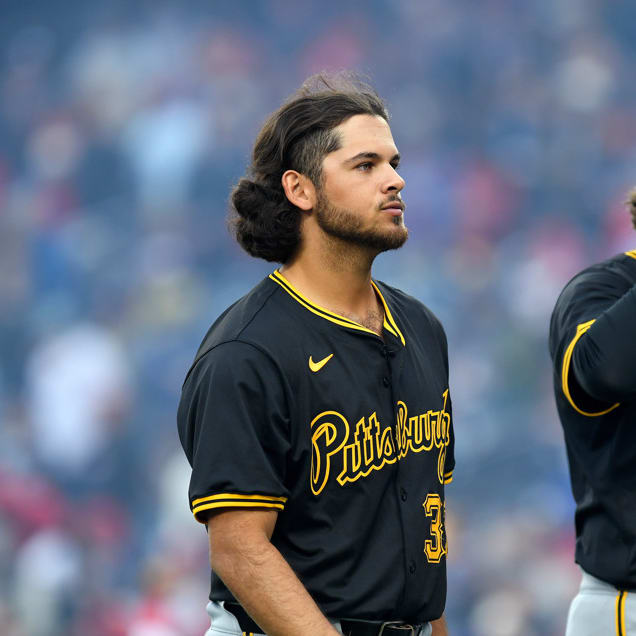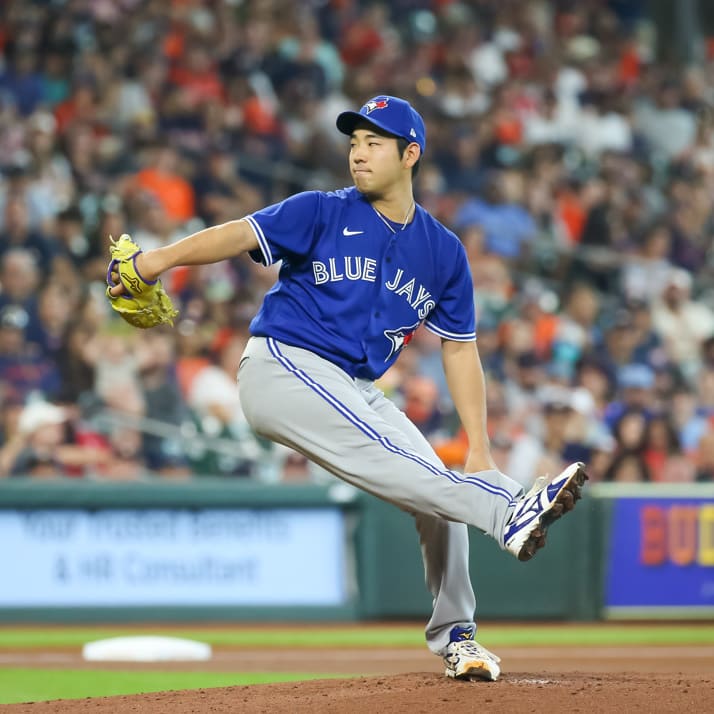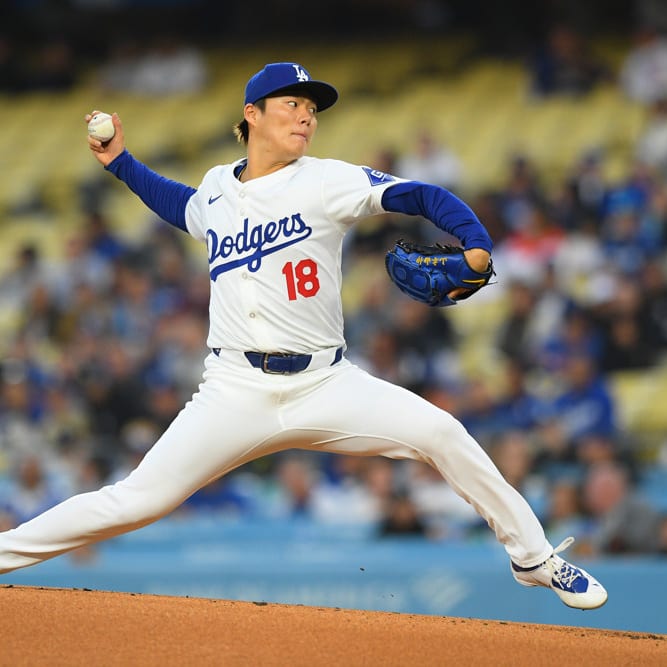This article is part of our Collette Calls series.
We may not all have money, but we all have opinions. When it comes to fantasy baseball, everyone has their own theory, belief, or axiom that they swear by as it has led them to a league title at least one time in their many years of playing fantasy baseball. While we count down the days to pitchers and catchers reporting (45 days or less depending on your team), I asked followers on Twitter as well as my friends at RJBullpen.com for their favorite bit of advice to fellow fantasy drafters. You may or may not find them useful for the active phase of your draft, but you should remember the rules do not always apply to the reserve/dynasty part of your draft when you are grabbing the prospects that we cover here throughout the season. Below are the top-10 tips I collected and my thoughts on how they apply to our favorite part of the draft.
Saves ain't got no face: At the major league level, this is absolutely true. Saves come from Mariano Rivera just as they come from Shawn Chacon. However, know the faces of the guys in the minor leagues that are piling up saves because those are the prospects you do not want to roster. Teams rarely, and I mean rarely, put talented arms in closing roles in the upper levels. If they are in the minors enough to pile up 20-plus saves in a season, odds are they're going to do it again
We may not all have money, but we all have opinions. When it comes to fantasy baseball, everyone has their own theory, belief, or axiom that they swear by as it has led them to a league title at least one time in their many years of playing fantasy baseball. While we count down the days to pitchers and catchers reporting (45 days or less depending on your team), I asked followers on Twitter as well as my friends at RJBullpen.com for their favorite bit of advice to fellow fantasy drafters. You may or may not find them useful for the active phase of your draft, but you should remember the rules do not always apply to the reserve/dynasty part of your draft when you are grabbing the prospects that we cover here throughout the season. Below are the top-10 tips I collected and my thoughts on how they apply to our favorite part of the draft.
Saves ain't got no face: At the major league level, this is absolutely true. Saves come from Mariano Rivera just as they come from Shawn Chacon. However, know the faces of the guys in the minor leagues that are piling up saves because those are the prospects you do not want to roster. Teams rarely, and I mean rarely, put talented arms in closing roles in the upper levels. If they are in the minors enough to pile up 20-plus saves in a season, odds are they're going to do it again in the minors before they ever do it in the majors.
Take the best player on the board: I do not recommend taking a top-100 list and just taking the highest guy available each time your pick comes up in the reserve rounds. Ideally, you aim to set up a talent stream so the players on your 23-man roster that have expiring contracts are being replaced by the prospect in that system that you own. Or, you take the rookie for the player on the one-year contract that you draft in the reserve round so when that veteran is flipped to another team after the Super Two date passes, you are not losing the at-bats to a competitor. Take the prospect that fits your team needs, especially those needs that you failed to address in the active phase. If you heard me on the RotoWire radio show on Tuesday, you heard me mention 17-to-20 percent of the stolen-base totals in the end of the season come from the waiver wire and reserve rounds.
Someone will reach too early for a rookie: It happens in both phases of the draft. We all have that special prospect that we think will become the next Tim Lincecum or Josh Hamilton but you have to consider a few things first. If that player is 18, do you have the patience to wait his development out? Is he blocked by a big contract at the major league level? If you have a low-level, do not take him in the early rounds especially if you have dollar figures assigned to your league. In my local leagues, we have 17 reserve rounds and they are tiered off into $10 and $5 rounds. If you want to assign an extra $5 value onto a prospect in Round 8 because you are afraid he will not be there in Round 9, that is your prerogative but I would rather apply the value elsewhere.
Don't wait too long on a player you want: If there are no staggered dollar values in your league, all bets are off on taking players after the first five rounds. If you have drafted what you need to fill your gaps on the active roster as well as a sleeper saves candidate or two, do what you will with the rest of the spots. Years ago, a guy in my league used his fifth reserve pick to take Justin Upton…when he was still a junior in high school!
A sure thing veteran is always better: ...and a good prospect at the upper levels is sometimes better than a great one at the lower levels. You can get more immediate returns on that good prospect who may become a better player while your competitor waits three to four seasons on that 18-year-old scouting report stud to develop.
Hitter over pitchers, always: TINSTAAPP - tattoo it into your forearm if you have to. There is no such thing as a pitching prospect. They are made to break your heart. Ryan Anderson, Roger Salkeld, Brien Taylor, the list goes on and on. If you have two players ranked similarly on your draft list, always take the hitter over the pitcher.
Target +800 OPS's at every position: This is a friendly reminder that not all .800 OPS marks are created equally. Don't believe me? Go here and look at the different leader boards for each league. Stats are not as important as the secondary skills.
Projections are not gospel: Neither are scouting reports. I mentioned this last month - Mariano Rivera was not rated as a top-10 prospect in the Gulf Coast League in his first year in baseball. James Shields never made a top-10 list in the Rays organization by Baseball America. As good as Alex Cobb looked in 2011, he was ranked the 16th best prospect in the Rays' organization by Baseball America last year. Take the reports, take the stats, take the rankings, and make your own judgment call on whether the mix is a recipe for success or a recipe for disaster.
Don't pay for wins or saves, pay for good pitching: Additionally, do not pay for minor league statistics. Pay for minor league skills. There are sexy strikeout totals in the lower levels that do not always translate to upper level success. This past season, we saw Erik Surkamp's fringey fastball dominate Double-A hitters but have trouble missing bats when he was promoted thus joining a long list of pitchers that eventually run into a talent wall from which they have to adjust. In fact, just wipe away the wins, the losses, the ERA's, and strikeout totals and focus on the rates before reading the reports.
Know 20% more players than need to be drafted on draft day: If you are in a standard 12-team mixed league, you are going to see 276 players drafted. Dollars to donuts, they won't all be the 276 players your particular cheat sheet of projections had so you should have 330 names down on your paper so nobody takes you by surprise. Conversely, put at least 20 percent more players on your minor league cheat sheet than you need. You could outline the perfect draft of 10 players only to see someone else beat you to a player or two you thought nobody else knew. It is impossible to know everyone, but there is no need to know everyone on draft day because only a small percentage of prospects will go on draft day. If your league takes five prospects in the reserves, drill down your list to 75-80 prospects and rank them according to the rules of your league and your own team needs.
The only other advice I would add here is that you have to be an excellent judge of how prospects are valued in your own league. Trading prospects is tough to do because some people do not have the patience to wait while others do not realize the value of prospects or follow their production within a season closely enough. If you are drafting a guy, make sure it is one you plan on keeping because odds are you are never going to be able to flip that player for the value you have him at. When it comes to dump time in your league, cheap major league keepers seem to have more value to today's fantasy player than some of the top minor league prospects have outside of the top four or five guys.










